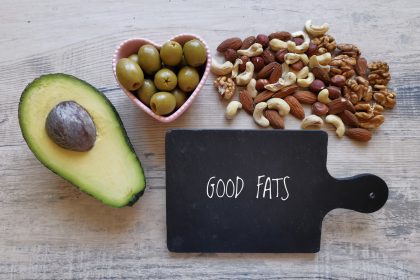The unexpected truth about your daily spoonful
Not all peanut butters are created equal. While natural varieties contain simply ground peanuts and perhaps a pinch of salt, many popular brands pack their jars with additions that transform this simple spread into something entirely different. A typical two-tablespoon serving tells only part of the story:
The calories clock in at 204, with total fat reaching 16 grams. While these numbers might seem high, the type of fat matters more than the quantity. The carbohydrate content stays relatively low at 7 grams, with 2 grams of fiber helping to slow digestion. Perhaps most impressively, those two tablespoons deliver 7 grams of plant-based protein.
The hidden ingredients lurking in your jar
Many commercial brands add hydrogenated oils to prevent separation, a process that might improve appearance but could compromise health benefits. Some manufacturers introduce extra sugar, transforming a naturally nutritious food into a dessert-like spread. Reading labels becomes crucial, as terms like “natural flavors” and “palm oil” frequently appear in ingredient lists.
When nutrition labels tell half-truths
Marketing claims often overshadow reality when it comes to peanut butter labels. Terms like “natural” lack strict regulatory definitions, allowing brands to use them liberally. The presence of “reduced fat” varieties might seem appealing, but these products often compensate for flavor by adding extra sugar or artificial sweeteners.
The surprising health benefits you never knew about
Beyond its protein content, peanut butter offers an impressive array of nutrients. Its monounsaturated fats mirror those found in olive oil, celebrated for heart health benefits. The spread provides significant amounts of:
Vitamin E, supporting immune function and skin health Magnesium, essential for bone health and energy production Phosphorus, working alongside calcium for strong bones Niacin, converting food into usable energy Zinc, boosting immune system function
The sustainability factor changing minds
Modern consumers increasingly consider environmental impact alongside nutrition. Peanut farming requires significantly less water compared to almond cultivation, making peanut butter a more sustainable choice than many alternative nut butters. One acre of peanuts needs about 5 inches of water to produce a crop, while almonds require substantially more.
Why your body might actually need more peanut butter
Research suggests that regular peanut butter consumption may help maintain healthy cholesterol levels when part of a balanced diet. The combination of protein, healthy fats, and fiber creates a satisfying effect that could prevent overeating later in the day. Studies indicate that people who regularly consume nuts and nut butters often maintain healthier weights despite the caloric density of these foods.
The truth about allergies and sensitivities
While peanut allergies affect a portion of the population, their prevalence has led to misconceptions about peanut butter safety. New research suggests early introduction might actually help prevent allergies in children, though this should always be discussed with healthcare providers.
Making the right choice for your health
When selecting peanut butter, consider these factors:
Ingredient list length – fewer ingredients often indicate less processing Oil separation – natural settling suggests minimal additives Sugar content – many brands add unnecessary sweeteners Price point – higher cost doesn’t always equal better quality Organic certification – indicates pesticide-free peanut cultivation
Storage secrets that preserve nutrition
Proper storage significantly impacts peanut butter’s nutritional value and taste. Natural varieties benefit from refrigeration after opening, while processed types remain stable at room temperature. Exposure to heat and light can degrade beneficial compounds, making proper storage crucial for maintaining nutritional benefits.
The verdict on your daily spoonful
While peanut butter can absolutely be part of a healthy diet, quality and portion control remain crucial. Natural varieties offer the most benefits, while heavily processed options might undermine health goals. Understanding labels, choosing wisely, and enjoying in moderation allows this beloved spread to maintain its place in a balanced diet.

















